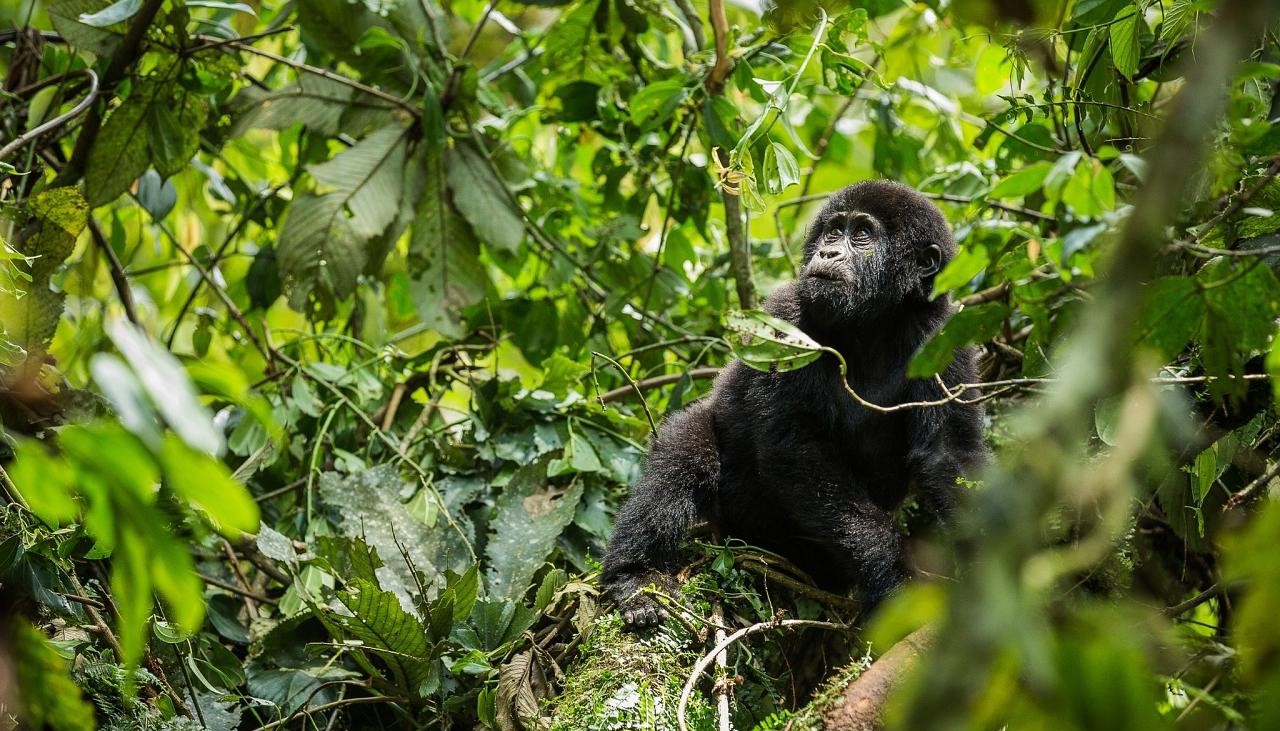Saving gorillas by improving community health and livelihoods: Q&A with CTPH
Written by Olivia Nater | Published: March 13, 2023
Through our Global Partners program, Population Connection supports a growing number of grassroots organizations around the world working to increase access to education, public health and family planning services. Their efforts make a vital difference in their local communities and represent the “final step” in our shared work to make the world a more just and sustainable place for everyone.
Get to know our wonderful partners in this Q&A series! Here we talk to Dr. Gladys Kalema-Zikusoka, a Population Connection board member and Founder and CEO of Conservation Through Public Health (CTPH) in Uganda. CTPH promotes biodiversity conservation by enabling people, gorillas and other wildlife to coexist through improving their health and livelihoods in and around Africa’s protected areas and wildlife rich habitats.
What prompted you to start your organization?
I started CTPH with Mr. Lawrence Zikusoka, my husband, and Mr. Stephen Rubanga, a veterinary technician, in 2003 because we were concerned about disease transmission from humans to the endangered mountain gorillas which are so closely related and, therefore, very susceptible to human diseases. At the time, there were only an estimated 650 mountain gorillas left in the wild; they were critically endangered.
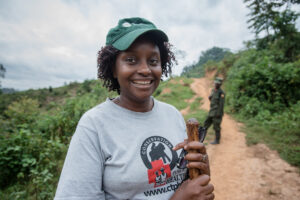
I became very concerned about the transmission of zoonotic diseases between humans and wildlife after leading a team, whilst I was working as the first veterinary officer at the Uganda Wildlife Authority. We had to deal with a scabies outbreak in the gorillas of Bwindi Impenetrable National Park (BINP) in 1996. The fatal disease, which resulted in the death of an infant gorilla and treatment of the rest of the group members, was traced to the local communities living around BINP who are amongst the most impoverished and marginalized communities in Uganda, with very limited livelihoods opportunities or social services. It was clear that the health and well-being of the communities was intrinsically interconnected with the health and survival of the mountain gorillas, other wildlife and their habitat. We started working with the community members to improve their health, hygiene, sanitation, family planning access, and livelihood opportunities, whilst at the same time monitoring the health of the mountain gorillas to provide an early warning system for cases of illness, training community members to reduce human-wildlife conflict by safely herding wild animals back to the forest if they had strayed out, and providing support to community members to monitor and address the health of their livestock, including by de-worming regularly.
Our work has helped improve the health and well-being of the local community members and, in so doing, reduced the threat of disease and parasite transmission to the gorilla population through our “One Health” approach that addresses the health of people, animals and the environment together.
What programs or projects are you currently working on?
We have three core strategic programs at CTPH:
1) Wildlife conservation
This includes routine gorilla health monitoring through fecal sample analysis and clinical observation, habitat conservation, human-wildlife conflict resolution and community conservation education to improve attitudes to wildlife and conservation.
2) Community health
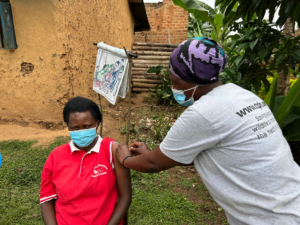
We have volunteer community health workers trained to do conservation work. We call them Village Health and Conservation Teams (VHCTs). They reach households surrounding Bwindi with integrated health and conservation information and services, supporting improved hygiene and sanitation, family planning access, nutrition, risk awareness (e.g. understanding the risks associated with eating bush meat), maternal and child health monitoring, sustainable agriculture and conservation awareness. The 270 VHCTs also encourage their fellow community members to report to the health centers when sick and support medication adherence and medical referrals, where needed. This component of our work supports improved health and wellness amongst the community members and also reduces the risk of onward transmission of zoonotic diseases, including to the gorillas.
3) Alternative livelihoods
Recognizing that providing alternative livelihoods and sources of income is critical to addressing harmful human behaviors that place the gorillas, their habitats and other wildlife at risk — such as bush meat poaching, illegal foraging in the forest and fuel wood collection — CTPH works to support improved and alternative livelihoods for community members around BINP. This includes engaging 500 smallholder coffee farmers in our social enterprise, Gorilla Conservation Coffee, which helps to improve their incomes by ensuring the benefits of the global market, with an increasing number of people willing to pay more for a quality, sustainable, ethically-sourced product with a tangible and traceable cause, are realized by the coffee growers in Bwindi.
We prioritize community-led activities at CTPH. As such, we engage different cadres of community volunteers in the implementation of our activities and support their roles with sustainable incentives including group livestock projects and Village Savings and Loans Associations (VSLAs).
Recently we launched a project with young people in Bwindi, the “STEMming biodiversity loss in Bwindi’ programme. The project engages young people in Science, Technology, Engineering, Arts and Mathematics (STEAM) inspired conservation projects around BINP. Through the project, we are engaging 41 youth and school groups from Mukono and Bujengwe parishes in Bwindi with over 2,000 school children and youth providing conservation education and STEAM training and helping them to identify real world conservation problems in their communities, which they can address through STEAM. Groups are supported to create solutions to the problems they identify, becoming conservation and environmental champions and youth guardians in their communities. The project engages young people and supports community-led conservation, as well as reducing threats to biodiversity in and around BINP.
What do you hope to achieve in the next five years?
We are currently working on our new five-year 2023-2027 strategic plan which we will launch in March this year. Whilst our core business remains the same, we have consolidated some of our areas of work, including transitioning our VHCT and One Health work into the CTPH Model Household Approach.
The Model Household Approach is a simple index based on 12 indicators which are known to improve peoples’ health and well-being and, at the same time, reduce threats to biodiversity. Households can assess themselves against the 12 indicators, make practical changes and monitor their progress to becoming Model Households. The indicators include practicing sustainable agriculture, adopting alternative livelihoods, improving reproductive health, accessing voluntary family planning, investing in suitable sanitation and hygiene measures as well as prioritizing wildlife conservation.
CTPH is currently engaging 7,616 and 1,506 households in the Model Household Approach around Bwindi Impenetrable National Park and Mt. Elgon area respectively, reaching over 40,000 people. We plan to scale this up in the coming five years, including to the Democratic Republic of the Congo (DRC) through training, documenting the approach and through partnerships.
Additionally, CTPH continues to advocate for integrated responses to health and conservation. Although One Health has gained recognition since the onset of the COVID-19 pandemic, there remain few practical examples of implementing One Health approaches, particularly by community members, at the community or household level. CTPH believes that community-driven and -led approaches are the most sustainable and, as such, prioritizes these.
In the period following implementation of our community-led integrated health and conservation activities in BINP, we saw an increase in modern family planning use from 20 to 60% (exceeding the national average increase for rural areas); 50% increase in hand-washing facilities; 11-fold increase in tuberculosis referrals; reduced human-gorilla conflict; reduced gorilla disease; and improved environmental stewardship and sustainable agricultural practices in homes. We will continue to share our lessons learnt and best practices so that they can be scaled up and replicated.
We are currently working in DRC and hope to consolidate activities there, as well as expanding our model to other gorilla habitats in Africa.
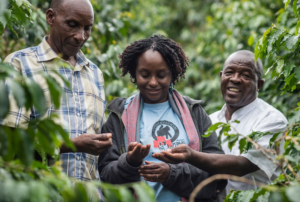
We are also working on plans to engage more smallholder coffee farmers around Bwindi in Gorilla Conservation Coffee as well as expand our global market for Kanyonyi coffee brand. We have recently remodeled and refurbished both the Gorilla Conservation Camp (in Buhoma, on the outskirts of Bwindi Impenetrable National Park, Uganda) and the Gorilla Conservation Café (in Entebbe, Uganda) and look forward to welcoming more guests to both in the coming years.
What have been some of the greatest challenges you have faced?
Being the first ever wildlife veterinarian in Uganda has been both a challenge and a great reward. When I started as a vet, veterinary medicine and careers in the conservation field were not well established and were very male-dominated. I started off by having to convince conservation biologists that wild animals, particularly endangered species, should receive treatment when they are sick and not just be left for natural selection. It has taken a while for society to accept that women can work in remote field conditions with dangerous wild animals and I am glad to have broken this societal norm.
In addition, despite gaining recognition recently, in the wake of the COVID-19 pandemic, One Health was a relatively unknown concept and field when I started advocating for, and implementing, an integrated approach to conservation and health. This made fundraising particularly challenging as many donors took a linear approach, focusing on either conservation or health, rather than on the integration of both. For several years after establishing CTPH, we worked without salaries. However, conviction in our findings and a commitment to conserving mountain gorillas and improving the health and well-being of community members helped to keep us motivated.
Working with some of the most isolated and impoverished communities around protected area of Bwindi is also a challenge. Their lifestyles pose an imminent threat to wildlife and their habitat due to rapid human population growth, competition for food, human-wildlife conflict, and the spread of zoonotic diseases between people, wildlife and livestock. All these things threaten the continued survival of endangered mountain gorillas and other gorilla subspecies. However, with appropriate sensitization and meaningful inclusion, community members living on the outskirts of protected areas have embraced their roles as custodians of the environment and are today playing a pivotal role in the protection of gorillas, other wildlife and their habitats.
What are you most proud of?
I am proud to have established one of the first One Health models in the world 20 years ago addressing human, animal and ecosystem health together. In a biodiversity-rich area like Bwindi, it is so important to address these issues together — apart from being more effective, it helps to create synergies and is more economically effective.
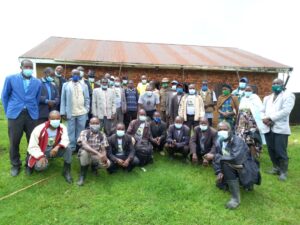
The discovery of the scabies outbreak in critically endangered mountain gorillas is another accomplishment that I am very proud of in my work as a conservationist. We were able to mitigate the situation by treating the affected gorillas with Ivermectin. Saving the gorillas, who are amongst our closest relatives in the animal world, is critical in itself, but their existence also helped to increase understanding about cross-species disease transmission. Ensuring the survival of the mountain gorillas is also vital for the Uganda Wildlife Authority (UWA). Tourism and travel alone provides about 700,000 jobs and contributes 7.7% of GDP to the Ugandan economy. Revenue generated from great ape tourism contributes over 60% to UWA revenue and helps conserve the other less visited parks. It is a vital source of income for the communities living in close proximity to mountain gorillas as well. For example, communities living around Bwindi Impenetrable National Park earn a living by working as rangers and trackers, providing services as porters and guides, working in hotels, and selling crafts and other items to tourists that visit to see the mountain gorillas, and they also receive benefits through UWA’s revenue sharing mechanism.
Ultimately, I’m proud to have played a role in mountain gorilla conservation. There was a time when they were predicted to be extinct by the turn of the millennium — in 1997, they were classified as “critically endangered” by the International Union for Conservation of Nature (IUCN), with only around 650 remaining in the world. However, in 2018, mountain gorillas were reclassified as “endangered” due to their sustained positive growth resulting in 1,063 gorillas. Mountain gorillas are the only gorilla sub-species that is increasing in numbers — I’m proud to have contributed to that.
Anything else you’d like to share with Population Connection members?
Whilst the increase in the mountain gorilla population shows huge progress and is a great reason for hope, demonstrating that the concerted efforts by conservationists are working, their survival remains perilous as they face a number of threats — including the very real and worrying threat of zoonotic diseases like COVID-19 and other respiratory diseases, as well as Ebola and intestinal parasite transmission. It’s critical that we all remain vigilant in protecting this incredible sub-species, and in preventing zoonotic disease spread.
CTPH will celebrate its 20th anniversary in September this year and I would like to take this opportunity to thank all our friends, partners, donors, and supporters for guidance, advice and support accorded to us over the last 20 years. We have achieved a lot together. Readers can sign up to receive our newsletters to keep up to date with our activities and plans for our 20th anniversary celebrations!
Secondly, my book, Walking with Gorillas, about my conservation and leadership journey shaped by the One Health approach is coming out on March 14! You can purchase it here. Here’s a nice review in Publishers Weekly, and you can read an excerpt from my book in the March 2023 issue of the Population Connection magazine!
To learn more about CTPH, visit their website and follow them on Facebook, Twitter and Instagram!

